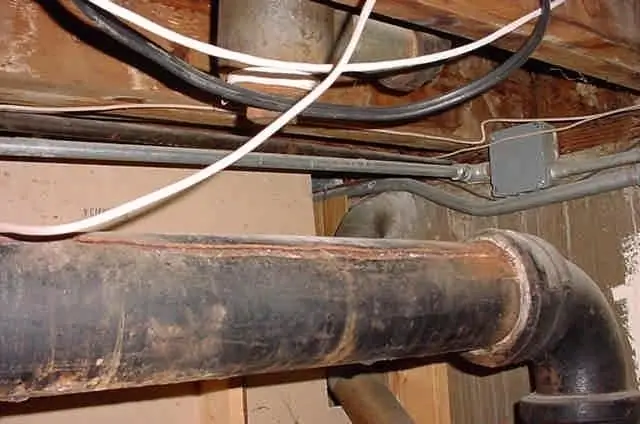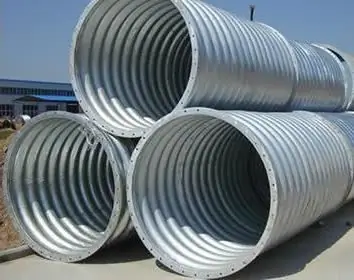2025 Author: Howard Calhoun | [email protected]. Last modified: 2025-01-24 13:10:31
Metal pipes are hollow products of high-quality rolled metal. Such products have found wide application in the transportation of liquids and gases, in construction, mechanical engineering, shipbuilding, and the production of various finished products. In the catalogs of manufacturers there are a large number of varieties of metal pipes, the characteristics of which significantly affect the performance of finished structures.
Distinctive characteristics of pipes
The range of metal pipes is quite large and includes dozens of different products. Traditionally, rolled metal products are distinguished by the following indicators:
- section type - it can be round and profile;
- production method - according to this feature, products are welded and seamless;
- type of steel - the material used for the manufacture of rolled metal products affects the service life, strength and other indicators;
- diameter - it affects the size and throughput of pipes;
- wall thickness - affects the strength and weight of the structure;
- availability of additional coating (galvanized and non-galvanized).
Section types
The mosta common option is considered to be a round pipe, which is used almost everywhere: laying water pipes, sewers, gas pipelines, ventilation, reinforcement of construction sites, equipment assembly, automotive industry.

Less in demand, but extremely important, are square and rectangular pipes. Their important characteristics are flexural strength and low weight. This makes it possible to use such products in construction instead of heavy cast structures.
Very rarely used options with an oval and arched profile. They are very convenient to use if there is a shortage of space, because the throughput of the pipe remains good.
Production Methods
When choosing a pipe, it is important to consider how it is made.
Seamless products are the most reliable metal pipe that can withstand high pressure. Its distinguishing feature is the absence of a welded seam. It is made in two ways.
- From special cast blanks (they are also called ingots). In the course of production, the blank is heated to high temperatures and machined (drawn, drilled, rolled, calibrated).
- Casting method. In this case, a special form is used with a rod in the middle. Molten metal is poured into a mold and allowed to cool. As a result of such actions, rolled metal of the required thickness and diameter is obtained.
Welded pipe is another option. Learn thisa metal product can be unmistakably - a welded seam stretches along the wall for the entire length of the product. Such pipes are made from sheet material of the desired thickness. First, the sheets are cut (given the desired length and width). After that, a piece of steel is rolled out on machines and given the desired profile and diameter. Indirect stitch options are also available.
The strength of such products is somewhat lower, however, the cost is very democratic. At the same time, consumers can not worry about the reliability of the finished product. After manufacturing and welding, the pipes and seam are tested for strength.

Types of steel
For the production of rolled metal, different types of steel are used, which differ in chemical composition and physical characteristics: yield strength and strength, hardness and impact strength. There are the following types of steels.
- Carbon construction. This category includes steels 10, 15, 20, 08 and St3-6sp. They are used for laying high pressure pipelines, as well as gas pipelines, heating systems and heaters.
- Low alloy and alloy steels. Among them are 17GS, 10G2, 15XM, 09G2S, 12X1MF and some others. The scope of their use is the installation of main oil and gas pipelines, pipelines for hydrogen sulfide-containing and corrosive environments.
- Alloyed stainless heat-resistant and corrosion-resistant steels. The list of such steels includes 12X18H12T, 08X18H10T, 03X18H11, 12X18H10T and 08X18H12T. Such rolled metal can be used in a moderately hazardous environment and at high temperatures.

Diameter of round metal pipes
Producers of rolled metal products offer a wide range of products that differ in diameter and wall thickness. There are specific standards for each type of pipe.
The diameter of round metal pipes may vary depending on the manufacturing method.
Water and gas pipes are another variety. The outer diameter of such products varies from 25 mm to 550 mm. They are produced by hot-rolled method without weld (rolling and deformation after heating) and can be either thick-walled or thin-walled.
Squamous welded products have slightly different standards. Their external diameter can reach from 8 to 1620 mm.

Dimensions of profile pipes
If we talk about square metal pipes, then the sides of 1010 mm are considered the smallest size, the profile pipe with dimensions of 180180 mm is considered the largest. The wall thickness also varies from 0.8 mm to 14 mm. The quality of manufactured products is clearly controlled by GOST 8639-82.
For metal profile pipes with a rectangular section, the parameters and dimensions are somewhat different. The cross-sectional dimensions of the smallest pipe are 1510 mm, the largest - 180150 mm. In this case, the wall can be from 0.8 to 12 mm in thickness. The quality of this rolled metal product is regulated by GOST 8645-68.
Galvanized and non-galvanized surface
Metal pipes are often produced with a galvanized coating. What does it mean? During production, some rolled metal products are coated on top with a zinc solution, which forms a thin film on the surface. Such a layer prevents the metal from contacting the liquid, which means it has anti-corrosion properties.

Finished products from such products will last much longer than those made from ordinary metal pipes.
When choosing pipes for a particular project, a number of characteristics should be taken into account. Including the dimensions of metal pipes, their thickness and type of steel. These indicators directly affect the final cost of the work and the life of the facility. In other words, by carefully approaching the choice of rolled metal, you can reduce the cost of products without sacrificing quality.
Recommended:
Diameters and dimensions of cast iron sewer pipes. Types and features

Cast iron pipes are used today in the laying of external and internal sewerage systems. Products can be channelless and channel. Their service life can reach 100 years. Connecting elements and assortment of sewer pipes is determined by GOST 6942-98. After reading the documentation, you will be able to understand what parameters the pipes should have
Steel pipe diameters and pipeline installation features in modern homes

How can water supply be organized in modern private homes? Is it necessary to take into account the diameters of steel pipes, what processing do such products require? A few tips for those who are concerned about how to install pipes and keep them as long as possible
Perforated metal pipe: types, description and application features

The article is devoted to perforated metal pipes. The features of such products, varieties and scopes of application are considered
Types and diameters of metal pipes. Metal pipes of large diameters

Steel pipe is a cylindrical tube and is the most used product in the steel industry. The main use of steel pipes is to transport oil, gas and water over long distances. In household appliances, such as refrigerators, ordinary steel pipes are used, as well as in heating and water supply systems
Connection of HDPE pipes with a metal pipe: features, practical recommendations and reviews

If you decide to connect HDPE pipes to metal pipes, then it is important to familiarize yourself with the basic technologies for the work. When threading metal HDPE pipes of small diameter up to 40 mm, it is best to use fittings that have a thread for a metal pipe

